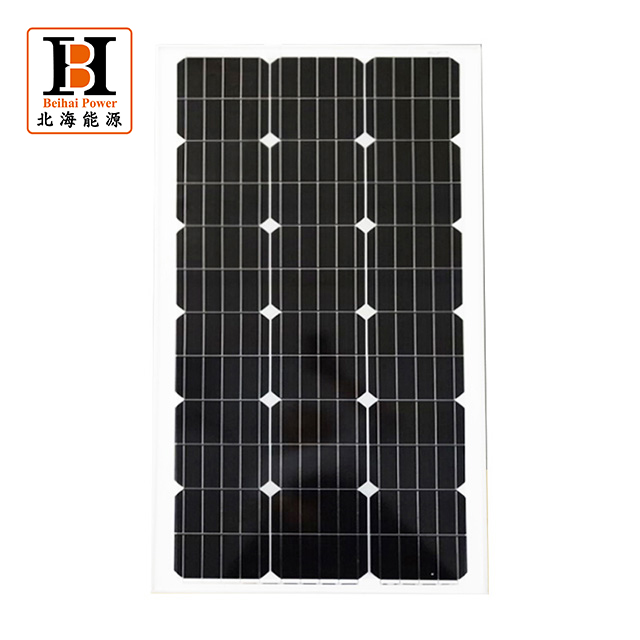380W 390W 400W Home Use Power Solar Panel
Product Description
Solar photovoltaic panel, also known as a photovoltaic panel, is a device that uses the photonic energy of the sun to convert it into electrical energy. This conversion is accomplished through the photoelectric effect, in which sunlight strikes a semiconductor material, causing electrons to escape from atoms or molecules, creating an electric current. Often made from semiconductor materials such as silicon, photovoltaic panels are durable, environmentally friendly, and work effectively in varying weather conditions.
Product Parameter
| SPECIFICATIONS | |
| Cell | Mono |
| Weight | 19.5kg |
| Dimensions | 1722+2mmx1134+2mmx30+1mm |
| Cable Cross Section Size | 4mm2(IEC),12AWG(UL) |
| No. of cells | 108(6×18) |
| Junction Box | IP68, 3 diodes |
| Connector | QC 4.10-35/MC4-EVO2A |
| Cable Length(Including Connector) | Portrait:200mm(+)/300mm(-) 800mm(+)/800mm(-)-(Leapfrog) Landscape:1100mm(+)1100mm(-) |
| Front Glass | 2.8mm |
| Packaging Configuration | 36pcs/Pallet 936pcs/40HQ Container |
| ELECTRICAL PARAMETERS AT STC | ||||||
| TYPE | 380 | 385 | 390 | 395 | 400 | 405 |
| Rated Maximum Power(Pmax)[W] | 380 | 385 | 390 | 395 | 400 | 405 |
| Open Circuit Voltage(Voc) [V] | 36.58 | 36.71 | 36.85 | 36.98 | 37.07 | 37.23 |
| Maximum Power Voltage(Vmp)[V] | 30.28 | 30.46 | 30.64 | 30.84 | 31.01 | 31.21 |
| Short Circuit Current(lsc)[A] | 13.44 | 13.52 | 13.61 | 13.7 | 13.79 | 13.87 |
| Maximum Power Current(lmp)[A] | 12.55 | 12.64 | 12.73 | 12.81 | 12.9 | 12.98 |
| Module Efficiency [%] | 19.5 | 19.7 | 20 | 20.2 | 20.5 | 20.7 |
| Power Tolerance | 0~+5W | |||||
| Temperature Coefficient of lsc | +0.045%℃ | |||||
| Temperature Coefficient of Voc | -0.275%/℃ | |||||
| Temperature Coefficient of Pmax | -0.350%/℃ | |||||
| STC | Irradiance 1000W/m2,cell temperature 25℃,AM1.5G | |||||
| ELECTRICAL PARAMETERS AT NOCT | ||||||
| TYPE | 380 | 385 | 390 | 395 | 400 | 405 |
| Rated Max Power(Pmax)[W] | 286 | 290 | 294 | 298 | 302 | 306 |
| Open Circuit Voltage(Voc)[V] | 34.36 | 34.49 | 34.62 | 34.75 | 34.88 | 35.12 |
| Max Power Voltage(Vmp)[V] | 28.51 | 28.68 | 28.87 | 29.08 | 29.26 | 29.47 |
| Short Circuit Current(lsc)[A] | 10.75 | 10.82 | 10.89 | 10.96 | 11.03 | 11.1 |
| Max Power Current(lmp)[A] | 10.03 | 10.11 | 10.18 | 10.25 | 10.32 | 10.38 |
| NOCT | lrradiance 800W/m2,ambient temperature 20℃,wind speed 1m/s,AM1.5G | |||||
| OPERATING CONDITIONS | |
| Maximum System Voltage | 1000V/1500V DC |
| Operating Temperature | -40℃~+85℃ |
| Maximum Series Fuse Rating | 25A |
| Maximum Static Load,Front* Maximum Static Load,Back* |
5400Pa(112lb/ft2) 2400Pa(50lb/ft2) |
| NOCT | 45±2℃ |
| Safety Class | Class Ⅱ |
| Fire Performance | UL Type 1 |
Product Characteristics
1. Efficient conversion: under ideal conditions, modern photovoltaic panels can convert approximately 20 per cent of sunlight into electricity.
2. Long lifespan: high-quality photovoltaic panels are typically designed for a lifespan of more than 25 years.
3. Clean energy: they emit no harmful substances and are an important tool for achieving sustainable energy.
4. Geographic adaptability: can be used in a variety of climatic and geographic conditions, especially in places with sufficient sunshine to be more effective.
5. Scalability: the number of photovoltaic panels can be increased or decreased as needed.
6. Low maintenance costs: Apart from regular cleaning and inspection, little maintenance is required during operation.
Applications
1. Residential energy supply: Households can be self-sufficient by using photovoltaic panels to power the electrical system. Excess electricity can also be sold to the power company.
2. Commercial applications: Large commercial buildings such as shopping centres and office buildings can use PV panels to reduce energy costs and achieve green energy supply.
3. Public facilities: Public facilities such as parks, schools, hospitals, etc. can use PV panels to supply power for lighting, air-conditioning and other facilities.
4. Agricultural irrigation: In places with sufficient sunshine, the electricity generated by PV panels can be used in irrigation systems to ensure the growth of crops.
5. Remote power supply: PV panels can be used as a reliable source of power in remote areas that are not covered by the electricity grid.
6. Electric vehicle charging stations: With the popularity of electric vehicles, PV panels can provide renewable energy for charging stations.
Factory Production Process
Products categories
-

Phone
-

E-mail
-

Whatsapp
-

Top













